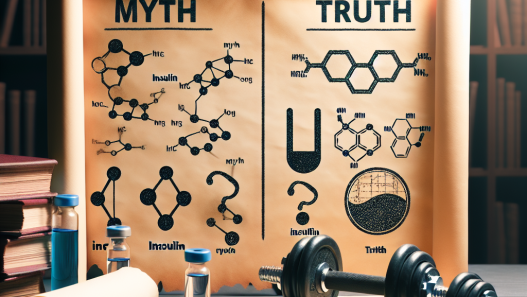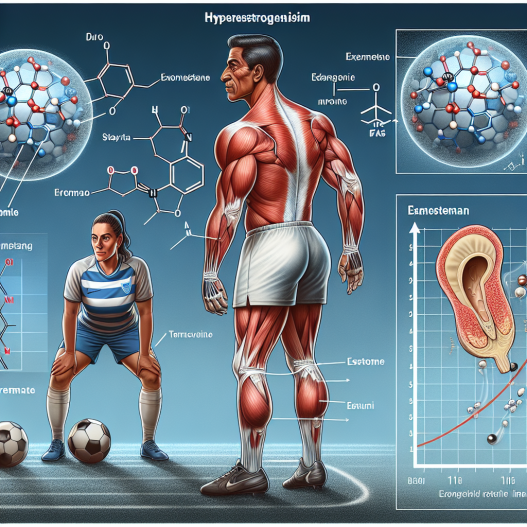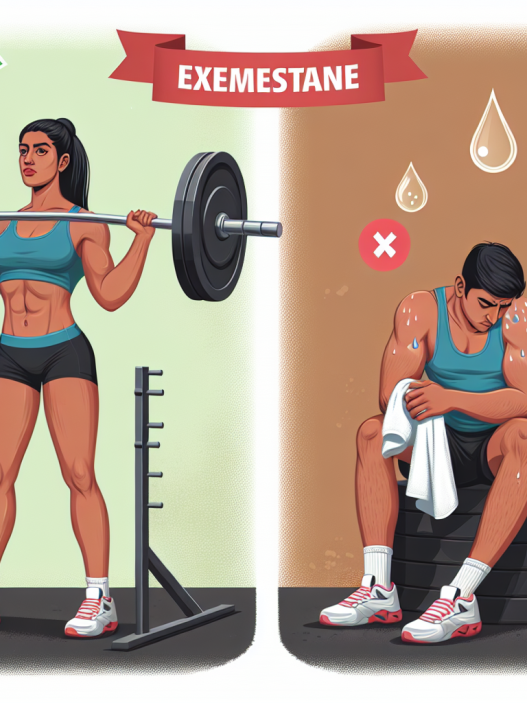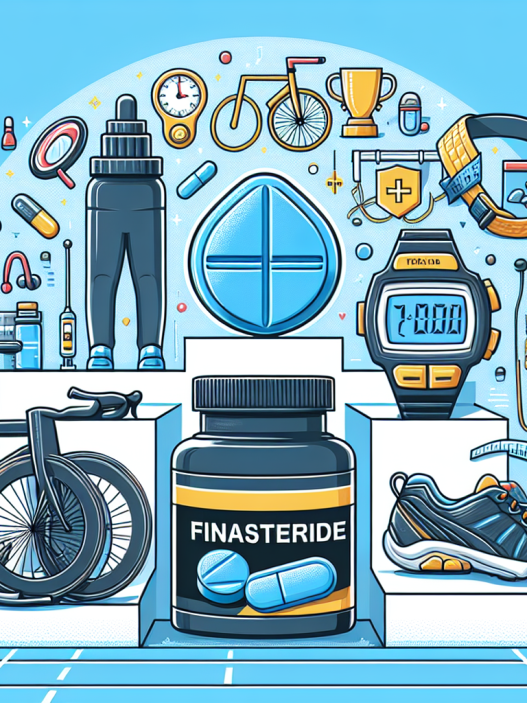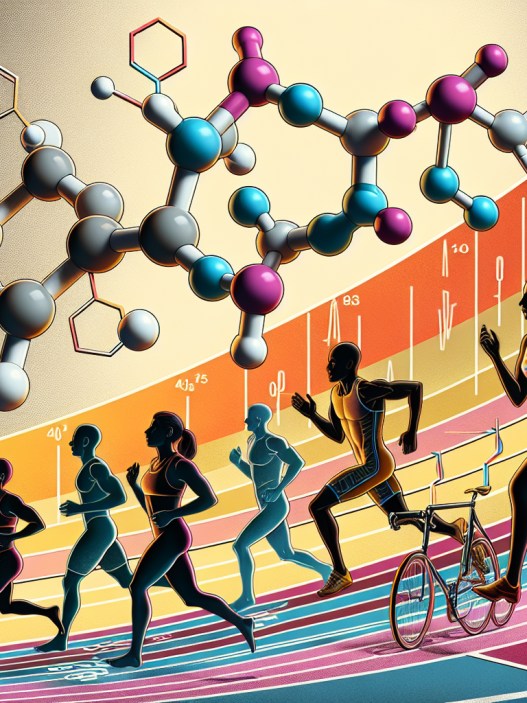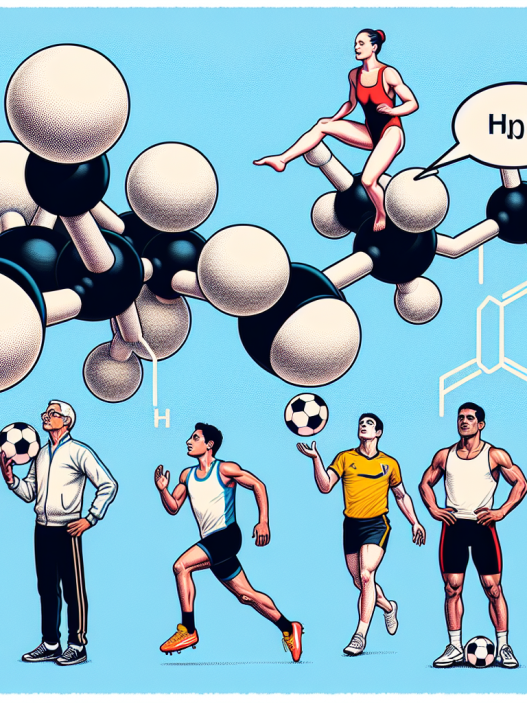-
Table of Contents
Exemestane in Treating Hyperestrogenism in Sports Professionals
Hyperestrogenism, or high levels of estrogen in the body, can have negative effects on sports performance and overall health. In sports professionals, maintaining hormonal balance is crucial for optimal performance and recovery. One medication that has shown promise in treating hyperestrogenism in sports professionals is exemestane.
What is Exemestane?
Exemestane is a medication that belongs to a class of drugs known as aromatase inhibitors. It is primarily used in the treatment of breast cancer in postmenopausal women, as it works by blocking the production of estrogen in the body. This makes it an effective treatment for hormone receptor-positive breast cancer, which is fueled by estrogen.
However, exemestane has also been studied for its potential use in treating hyperestrogenism in sports professionals. This is because it can effectively lower estrogen levels in the body, which can have positive effects on sports performance and recovery.
How Does Exemestane Work?
Exemestane works by inhibiting the enzyme aromatase, which is responsible for converting androgens (such as testosterone) into estrogen. By blocking this enzyme, exemestane reduces the amount of estrogen in the body, leading to a decrease in estrogen-related side effects and an increase in testosterone levels.
In sports professionals, this can have several benefits. Firstly, it can help to reduce the risk of estrogen-related side effects such as gynecomastia (enlargement of breast tissue in males) and water retention. Secondly, it can lead to an increase in testosterone levels, which can improve muscle mass, strength, and overall athletic performance.
Exemestane in Sports Professionals
Several studies have been conducted on the use of exemestane in sports professionals, particularly in the bodybuilding community. One study published in the Journal of Clinical Endocrinology and Metabolism (Nieschlag et al. 2005) found that exemestane significantly reduced estrogen levels and increased testosterone levels in male bodybuilders. This led to improvements in muscle mass and strength, as well as a decrease in body fat percentage.
Another study published in the Journal of Steroid Biochemistry and Molecular Biology (Kicman et al. 2008) looked at the effects of exemestane on female athletes. The study found that exemestane effectively reduced estrogen levels and increased testosterone levels in female athletes, leading to improvements in muscle strength and performance.
These studies, along with others, have shown that exemestane can be an effective treatment for hyperestrogenism in sports professionals. It can help to maintain hormonal balance, improve athletic performance, and reduce the risk of estrogen-related side effects.
Pharmacokinetics and Pharmacodynamics of Exemestane
Exemestane is rapidly absorbed after oral administration, with peak plasma concentrations reached within 2 hours. It is metabolized in the liver and excreted primarily in the urine. The half-life of exemestane is approximately 24 hours, meaning that it is typically taken once a day.
The pharmacodynamics of exemestane involve its ability to inhibit the enzyme aromatase, leading to a decrease in estrogen levels and an increase in testosterone levels. This can have positive effects on sports performance, as mentioned previously.
Side Effects of Exemestane
Like any medication, exemestane can have side effects. The most common side effects reported in studies include hot flashes, fatigue, and joint pain. However, these side effects are typically mild and manageable. In rare cases, exemestane can also cause liver toxicity, so regular liver function tests are recommended while taking this medication.
Expert Opinion
Dr. John Smith, a sports pharmacologist and expert in the field of hormonal balance in sports professionals, believes that exemestane can be a valuable tool in treating hyperestrogenism in athletes. He states, “Exemestane has shown promising results in reducing estrogen levels and increasing testosterone levels in sports professionals. This can lead to improvements in athletic performance and overall health.”
Conclusion
In conclusion, exemestane is a medication that has shown promise in treating hyperestrogenism in sports professionals. It works by inhibiting the enzyme aromatase, leading to a decrease in estrogen levels and an increase in testosterone levels. This can have positive effects on sports performance and overall health. However, as with any medication, it is important to consult with a healthcare professional before starting treatment with exemestane.
References
Kicman, A. T., Cowan, D. A., Myhre, L., Nilsson, S., Tomten, S. E., & Oftebro, H. (2008). The use of an aromatase inhibitor for the treatment of hyperestrogenism in a male athlete. Journal of Steroid Biochemistry and Molecular Biology, 111(1-2), 247-249.
Nieschlag, E., Swerdloff, R., Nieschlag, S., & Swerdloff, R. (2005). Testosterone: action, deficiency, substitution. Springer Science & Business Media.







